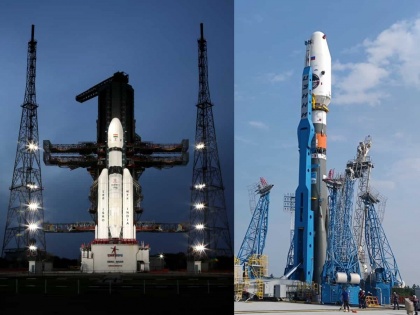Chandrayaan-3 vs Russia's Luna-25: Who Will Succeed in Reaching Moon's South Pole First
By Lokmat English Desk | Updated: August 11, 2023 16:19 IST2023-08-11T16:17:33+5:302023-08-11T16:19:01+5:30
India launched its third moon mission, Chandrayaan-3, on July 14 while Russia's Luna-25 blasted off nearly a month later ...

Chandrayaan-3 vs Russia's Luna-25: Who Will Succeed in Reaching Moon's South Pole First
India launched its third moon mission, Chandrayaan-3, on July 14 while Russia's Luna-25 blasted off nearly a month later on August 11. Both spacecraft are now locked in a race to land on the South Pole of the moon. Chandrayaan-3 is expected to make its soft landing on the lunar surface on August 23. However, despite launching late, Russia's mission could achieve the feat sooner. Luna 25 is Russia's first moon mission in nearly 50 years.
Roscosmos stated that its Luna 25 spacecraft will take about five days to travel to the Moon. It will then spend around five to seven days in lunar orbit before descending to one of three potential landing sites near the pole, reported Reuters. This timeline indicates that Russia's mission could reach the lunar surface around the same time as or shortly before the Indian mission.Roscosmos, however, assured that the two missions won't interfere with each other, as they have separate landing areas planned. The Russian Space Agency stated, “There is no danger that they interfere with each other or collide. There is enough space for everyone on the moon,” Reuters added. The Luna 25 mission aims to study the composition of the lunar polar regolith (surface material) and the plasma and dust components of the lunar polar exosphere, according to the United States space agency NASA. Although the south pole of the Moon has challenging terrain for landing, it is a highly valued target because scientists believe it can contain valuable amount of ice, potentially useful for extracting fuel, oxygen, and even drinking water.
Open in app